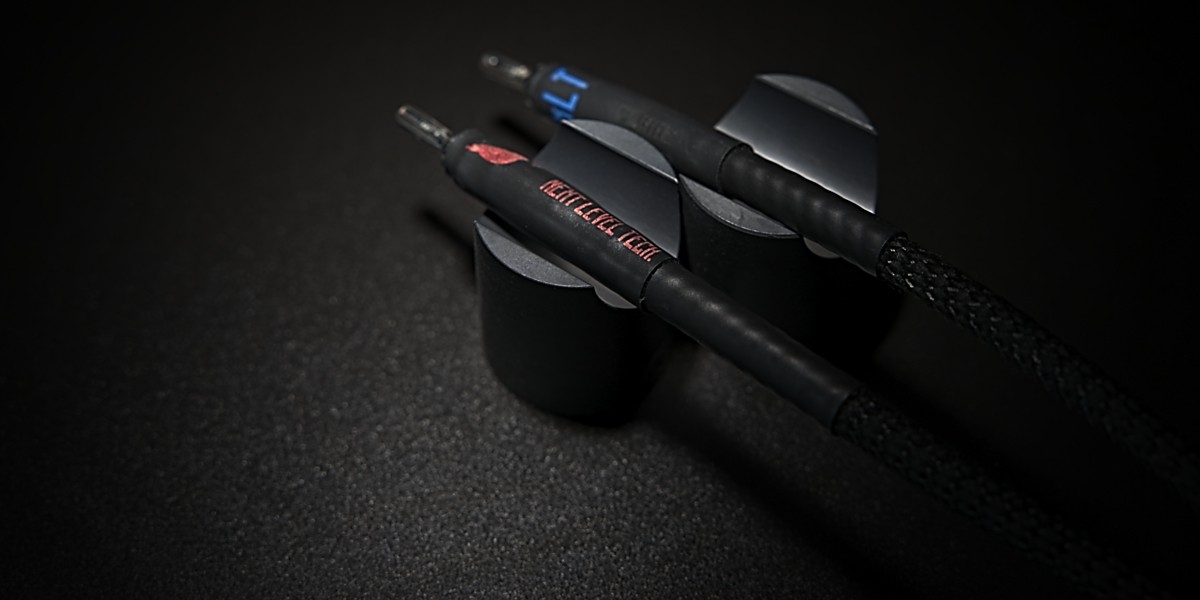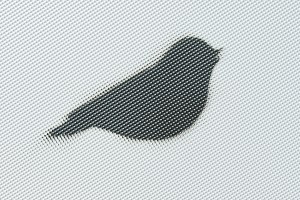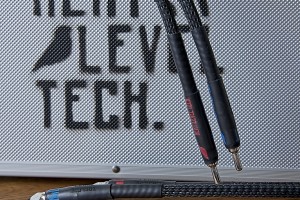Our Readers should already be familiar with this boutique Polish audio cable manufacturer as I had a chance to review their interconnects for you before. They were so impressive that I seriously considered adding the balanced version to my reference setup. Ultimately, I chose a much more expensive competitor but still consider Flame a great performer offering more bang for the buck than almost any other IC by any manufacturer. That is why I so gladly welcomed a chance to review its sibling, NEXT LEVEL TECH FLAME SPKR S speaker cable.
Introduction
For those of you who haven’t read my review of NxLT Flame interconnects (you can find it HERE), let me first of all encourage you to do so. If you choose not to, let me offer you some basic information about this quite a young brand established only in 2021. Until recently, they’d focused their attention mostly on analog interconnects, and prepared three models in both, balanced and unbalanced variance. The names are based on elements – Air, Water, and Flame, with the latter being the top-of-the-line, at least for now, and the only one I had a chance to spend some time with. It was, as you can read in the aforementioned review, a time well spent.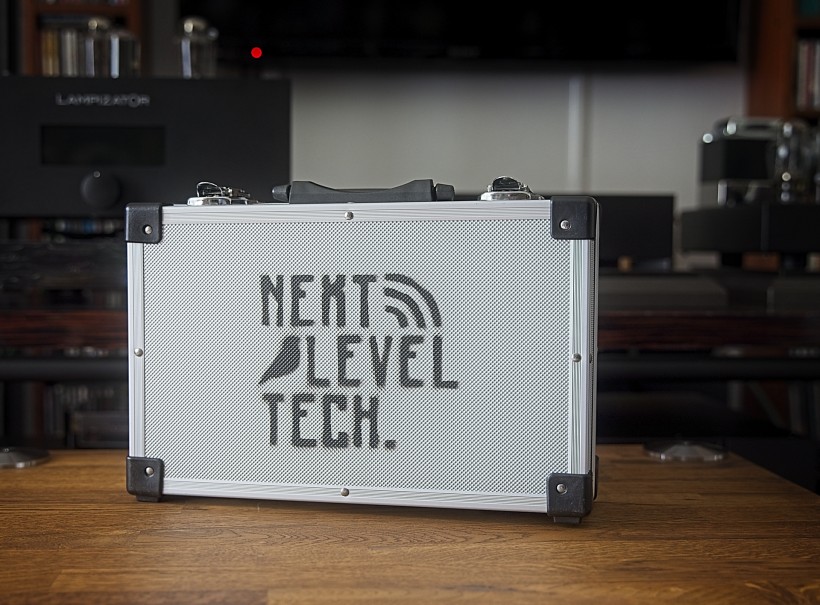
The story behind the Next Level Tech brand is somewhat similar to others you might have heard in the past. The owner and chief designer, Mr. Robert Słowiński, decided that when looking for cables for his system what he could find on the market wasn’t good enough (or too expensive) and took it upon himself to develop links that would satisfy his personal needs, and expectations. The search for proper components, and conductors, in particular, took a lot of time as it required a lot of research, listening, and comparisons. When developing his interconnects he compared his developments with the Hijiri Kiwami Million, the top achievement of the famous Japanese designer, Mr. Kazuo Kiuchi.
As an owner of this (Hijiri) interconnect I can see why he chose this particular model as his reference – it is a very special, incredibly musical IC that speaks to those, who put music first and sound second, if you know what I mean. It seems that Mr. Słowiński and I agree that this is the right order, or in other words, that sound is just the means to convey MUSIC with all its complexity, including the so important emotional layer, in the most natural and engaging way possible. Hijiri does it incredibly well, and so do NxTL Flame analog interconnects, both balanced and unbalanced versions that I tested.
After the result of painstaking, time-consuming work finally satisfied Mr. Słowiński he quickly found out, that his audiophile friends also appreciated his creations and wanted to have his interconnects for their systems. Their requests (or demands) eventually led to establishing the company and replacing the initial DIY approach with a more professional, business-oriented one. That’s the origin story behind the Next Level Tech brand. Ever since the brand’s lineup has been slowly developed and after having three models of balanced and unbalanced analog interconnects Mr. Słowinski decided to expand it with some digital ones with LAN being the first in the Flame series, and USB following it shortly. Next to come were speaker cables, now available in all three series. For this test, which considering my experience with the Flame interconnects seemed only natural, I got the one from the top line or the NEXT LEVEL TECH FLAME SPKR S.
Design and features
The cables come double-packed. There is the outside carton box, and inside I found a familiar metal case with the brand’s logo on it. The logo presents a bird which is a nightingale. Why this particular species? For Polish readers, it should be clear, as the Polish word is „słowik” and the owner and chief designer is Słowiński, and I bet he was called „słowik” a lot at school. The case the cable comes in is (I believe) exactly the same as the one interconnects are shipped in. It looks good and provides effective protection for its content during the transport/shipment. Inside it, apart from cables, one finds a short „usage manual” as well as a document stating the model, termination, and the person who verified the product before shipment (in my case initials suggested it was Mr. Słowiński himself).
One can order NEXT LEVEL TECH FLAME SPKR in various lengths, also custom ones. According to the price list, standard lengths range from 1,5 to 2,5 m in 0,25m increments. Other lengths are available upon order. The cable itself, to be honest, doesn’t look like much. I mean it is not particularly thick (which means it is quite flexible, which is a welcomed feature), it features a nice, but plain black sleeving and no fancy, mysterious „boxes” on it. It is directional and the „correct” direction is marked on the heat shrinks at the plugs.
The inconspicuous Flame SPKR cable though is terminated with high-quality Oyaide plugs. In the case of reviewed, 2,5m long set these were Oyaide’s SPSL spades on the speakers’ side and SRBN bananas on the amplifier’s. One more thing – in the reviewed S version the right and left channels are carried using separate runs (separate „+” and „-” for each, so four altogether). If you need to bi-wire your speakers you can either purchase a bi-wire add-on that you connect to your regular, single speaker cables or buy a second set of the single version. There is also the M version which, as the designer explained, uses twice as many conductors thus improving the sound quality which is reflected in its doubled price.
There isn’t much (or none really) information on the design of the cable on the manufacturer’s website but when asked about it Mr. Słowiński told me that the cables feature conductors of red OFC copper. Each run consists of ten very thin, individually placed in foamed polypropylene dielectric wires. The latter are cold-rolled and then they undergo a procedure devised by NxTL that consists of cryogenical treatment – freezing and thawing that lasts as long as five days. The cable is double-shielded. Soldering to the connectors is done inductively, and they use a custom tin for soldering. In addition, the cables are tightened with screws using a torque screwdriver, i.e. with a precisely controlled force. These are well-made, flexible, plain-looking cables that may not offer spectacular looks, but hopefully, deliver as impressive performance as the interconnects reviewed earlier.
Sound
The aforementioned „manual” I found in the box suggested, and Mr. Słowiński confirmed it in our conversation, that before the tested (or any) NEXT LEVEL TECH FLAME SPKR S achieves its optimal performance level it needs to play for 72 hours. To be clear, it has undergone some initial break-in in the factory, but it still needs 72 hours plugged in and (preferably) continuously playing in the target system before it shows its full potential. As my job is to assess the best possible performance of any tested component whenever possible I try to follow the manufacturer’s instructions to the letter to make sure they can fully spread their wings. And so I did also this time.
Initially, the Flame speaker cable connected one of the best amplifiers that ever visited my room, Marton Opusculum Omni V1.0, and my Ubiq Audio Model One Duelund Edition. I let it play for several days before starting my evaluation. Later in the course of the test, I switched to my regular setup with Circle Labs P-300 + M200 set driving the same Ubiq speakers, and finally, I used the tested speaker cable also between GrandiNote Shinai Class A integrated and Fonica FLAG L isodynamic, and later MACH4 speakers. In each case, my reference was my trusted Soyaton Benchmark speaker cable, although at some point I also used Siltech Classic Legend 880 L as another potential competitor. These are three quite different cables in terms of sound signature, with the Siltech being the most and tested Flame being the least expensive among them. Spoiler alert – performance did not quite reflect price differences or it did but only to some extent.
After more than the recommended 72 hours of „settling in” in the Marton-Ubiq setup, my first impression was a touch surprising. NEXT LEVEL TECH FLAME SPKR S despite its inconspicuous looks grabbed my attention with its… bass performance. I love Ubiq speakers for (among other things) their 30cm woofers operating in closed chambers and delivering powerful, dense, tuneful, yet tight bass notes (as long as the amplifier does its job properly). I used them in the Marton review (for HighFidelity.pl) using Soyaton Benchmark speaker cables and it was a great setup. Exactly the same one but with Flame speaker cable replacing Benchmark seemed to dig even deeper into the lowest part of the range and brought out an even more powerful slam.
The richest, most powerful bass still came with Siltech cable, but NxTL seemed to come quite close in this regard, a bit closer than Benchmark. I liked the juicy, powerful, and jumpy bass notes of Stanley Clarke’s electric bass guitar on the „Up” album a lot, the same as the opening bars on Prince’s „Welcome to America”. With the tested cable they all seemed a bit more visceral than with Soyaton’s cable which was hard not to enjoy with this type of music. Listening later to Marcus Miller from „Free” I basked in the raw energy of his performance so excellently conveyed using NxTL cables. I was truly impressed by how well the system featuring Flame SPKR S delivered all the intricate details of Marcus’ mastery, playing even the fastest passages in an immaculate, perfectly pronounced way.
I didn’t want to repeat the claim that one of the elements of music that is lost most in the whole recording/replaying process is energy, but hearing the performance of this setup I just couldn’t help myself. Sure, Marton Omni (for those who don’t know, it is a 49 kEUR amp, a smaller brother of the fantastic Marton Opusculum Reference 3, see the review HERE) was largely responsible for this feature but Flame Spkr S did its part in a surprisingly effortless and effective way allowing this amazing amp to truly shine. Once I heard that, I had to reach for some of my favorite rock/metal albums including bands such as AC/DC, Aerosmith, Guns’n’Roses, and more. These tracks were really fun to listen to because of how lively they sounded, because of a very good PRAT, and also because not only the bass, but also the midrange was rich, and colorful (not colored!) thus conveying the sound of electric guitars and vocals in an intense, engaging way.
The tested cable with this music genre showed that it exerts, or at least conveys, very good control over the reproduced music. Rock and metal albums are often a bit messy, so to speak, by which I mean that for the people who record them some aspects of the process are not as important as they are for us, audiophiles. Thus it is more challenging for any audio system to present such music in a (relatively) orderly way, to provide at least some separation and differentiation so that what we get is not just a unified and blurry wall of sound but something more. NxTL Flame Spkr S in this setup clearly demonstrated that it could easily do that which explained why listening to all of my favorites was such amazing fun.
It’s not that Flame is a master of rock music and bass and nothing else. It proved that it was a refined performer when I turned to more „audiophile” recordings, such as, for example, Adam Bałdych & Leszek Możdżer’s beautiful album „Passacaglia” released recently by ACT. Flame proved itself to be a resolving and detailed, but not particularly analytical and definitely not clinical, a touch warm and natural, but by no means „colored” speaker cable. It conveyed the beautiful, intimate atmosphere of a conversation, these two talented musicians allowed us to witness on this album. The presentation had a natural flow, was perfectly coherent, and simply put engaging. I liked the impression of „seeing” the two instruments in a closed/limited space but with a nice reverb that virtually expanded the soundstage in both, depth and height. The sound was open, filled with air, and spatial, maybe not quite on the level of Soyaton Benchmark, but definitely at least on par with Siltech.
For those who don’t know the former, let me just say, that all the spatial aspects of the presentation, as well as the air filling the whole space between instruments, are an unparalleled specialty of the Benchmark. In my setup, no other cable, even way more expensive ones, matched Benchmark in terms of these particular features. Yet, only by direct comparison using the same musical material the upper hand in this regard of Soyaton was clear which means that Flame did really, really well. Otherwise, the presentation conveyed by the NxTL speaker cable was simply beautiful, natural, and highly engaging.
Even more so that, as already mentioned, the so important for almost every type of music, midrange was with the Flame SPKr S colorful, juicy, or meaty if you will. It was also pretty powerful, as Oscar Peterson’s „The Lost Tapes” later clearly proved. His piano sounded deep and powerful with a lot of body, the same as the double bass. The former sounded quite clear, the latter was somewhat soft but that’s what was captured on the tape. I also liked how vibrant and lively the sound of the piano was, and how easy it was to appreciate the mastery of Oscar Peterson. It provided an abundance of details without emphasizing their numbers but rather using them to deliver a full, complete rendition of a great performance. Unsurprisingly, at this point of the assessment, Flame Spkr S clearly differentiated the recordings that were made over a few years period and with different musicians participating in it.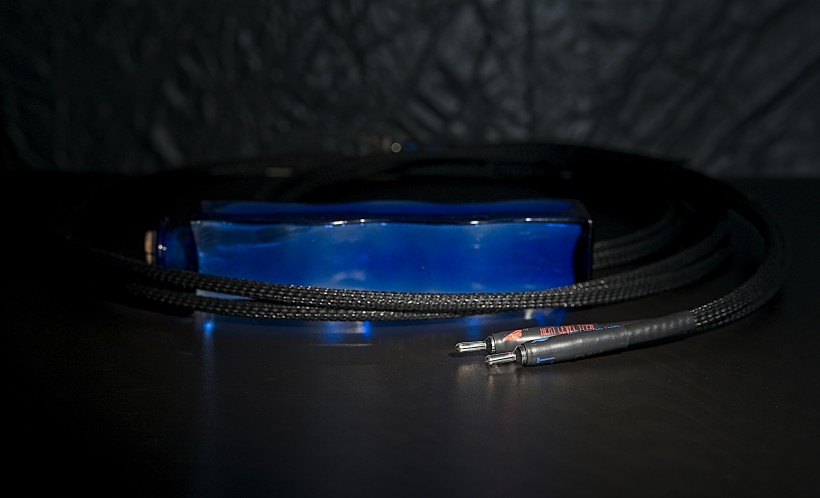
One of the tested cable’s numerous qualities is also the ability to recreate the recording’s mood and envelop the listener in it. That’s why this slow-pace album kept me in my chair from the first till the very last note focusing on absorbing the natural, so beautiful timbre of both instruments. Yes, Siltech was slightly more resolving, and the sound with it seemed even deeper and richer, but these were only tiny differences hard to realize without head-to-head comparison. On the aforementioned Oscar Peterson album or other live recordings, the ability to convey the atmosphere of the event was equally obvious. The tested cable proved also that it would deliver all the details, such as Oscar’s murmuring, or the audience’s reactions not only precisely but also believably, or convincingly, if you will, thus adding credibility, or the feeling of participation, to the whole experience.
Comparing Flame Spkr S to my Soyaton Benchmark using one of my favorite tracks, „Echos” from Rodrigo & Gabriela’s album „Mettavolution”, I couldn’t really peak my favorite. With Flame the sound was denser, there was more wood in the guitars’ sound, and Gabriela’s percussive style was more convincingly presented. Yet, the strings, the faster passages played by Rodrigo, and the spatial aspects of the presentation were Benchmark’s attributes. To be honest, I would be happy having both these cables and switching between them every now and then to experience a bit different in terms of sonic character, yet very similar in terms of performance and fun levels experiences.
I know I wrote a lot about bass already but once I finished my assessment I kept listening using Flame and one of the albums I listened to was Nenad Vasilic’ „Bass Room”, a solo double bass recording. And I was amazed once more not only by how much information the tested cable delivered to the speakers, but also how natural, and realistic this mighty instrument sounded with it. The sound was deep, and the timbre was beautifully natural on the one hand, and on the other, it was rich with details, also such as strings resonating on the instrument’s neck, fingers sliding along them, and so on. I could „see” this huge instrument in front of me, I could feel its power, and I could hear the sounds bouncing on the walls behind the instrument. It was a beautiful, but also very accurate presentation of this solo performance. It wasn’t showy at all, but it was impressive, almost as much as a live performance would have been.
Summary
Next Level tech Flame SPKR S speaker cable is… fun to listen to. It is not an analytical, super-duper audiophile product, but one focused on delivering a natural, immersive, and … fun experience. Don’t get me wrong – it is detailed, resolving, transparent, accurate, spatial, coherent, and nicely balanced, but all these features (and more) are not the ultimate goals but are used to offer exciting, highly involving, natural, and classy performances regardless of preferred music genre (maybe except for some extremes). They sort of shift the attention of the listener from sound to music and emotions that the latter is supposed to evoke. It is really hard not to get involved, not to tap the rhythm, not to rock your head, not to sing along, not to… have fun!
I can’t really point out any weaknesses of the Next Level tech Flame SPKR S. Sure, Siltech was a touch more resolving, and even richer, and the bass seemed to dig even deeper and with more power. Soyaton Benchmark on the other hand, still remains the ultimate choice for those who love huge, open space filled with air, and a touch “lighter” but fast, and precise sound. However, those who may want something in between the two could choose Next Level Tech SPKR S even for setups that, at least in theory, call for twice as expensive speaker cables. The latter suggests that it is a great choice also for those who plan to upgrade their systems in the future as there is a huge chance that Flame SPKR S will stay with you for a long time even after you replace your speakers and/or amplifiers for some higher class ones. I can’t promise it is the best possible choice for every one of you, but you should give it a try especially if what you’re after is natural-sounding music and true emotions rather than super-precise sound and ultimate fidelity. I bet it will convince many potential buyers, even some of those who plan to buy more expensive cables (they can always try out the M version) as it, the same as Flame interconnects, punches way above its weight!
Prices (when reviewed):
- Next Level Tech Flame SPKR S: 2829 EUR / 2m; 3309 EUR / 2,5m, +240 EUR / additional 0,25 cm
- Next Level Tech Flame SPKR M: 5658 EUR / 2m; 6617 EUR / 2,5m, +480 EUR / additional 0,25 cm
- Next Level Tech Flame SPKR S & M BiWire: + 283 EUR
Manufacturer: Next Level Tech
Associated equipment:
- Digital source: a custom passive server with WIN10, Roon, Fidelizer Pro 7.10, JCAT NET XE, and JCAT USB XE cards with FERRUM HYPSOS Signature power supply, KECES P8 (mono) linear power supply for the server, JCAT USB Isolator
- D/A Converter: LampizatOr Pacific 2 +Ideon Audio 3R Master Time (USB signal regenerator)
- Analog front end: J.Sikora Standard MAX turntable, J.Sikora KV12 tonearm, J.Sikora KV12 MAX tonearm, AirTight PC-3, phono stages: Grandinote Celio MK IV, ESE Lab Nibiru V 5.
- Power amplifiers: GrandiNote Shinai, Circle Labs M200, Art Audio Symphony II (modified)
- Preamplifier: Circle Labs P300
- Loudspeakers: GrandiNote MACH4, Ubiq Audio Model ONE Duelund Edition.
- Interconnects: Bastanis Imperial x2, Soyaton Benchmark, Hijiri Million, Hijiri HCI-20, TelluriumQ Ultra Black, KBL Sound Himalaya 2 XLR, David Laboga Expression Emerald USB, David Laboga Digital Sound Wave Sapphire Ethernet
- Speaker cables: Soyaton Benchmark
- Power cables: LessLoss DFPC Signature, Gigawatt LC-3
- Power: Gigawatt PF-2 MK2 and Gigawatt PC-3 SE Evo+; a custom power line with Gigawatt LC-Y in-wall cable; Gigawatt G-044 Schuko and Furutech FT-SWS-D (R)
- Network: Silent Angel Bonn N8 + Silent Angel Forester F1 + optical LAN isolator
- Racks: Base VI, Rogoz Audio 3RP3/BBS
- Anti-vibration accessories: ROGOZ-AUDIO SMO40 and CPPB16 platforms and ROGOZ AUDIO BW40MKII feet, Franc Accessories Ceramic Disc Slim Feet and Wood Block Platform, Graphite Audio CIS-35 and IC-35


